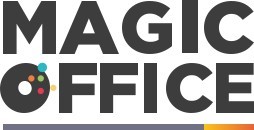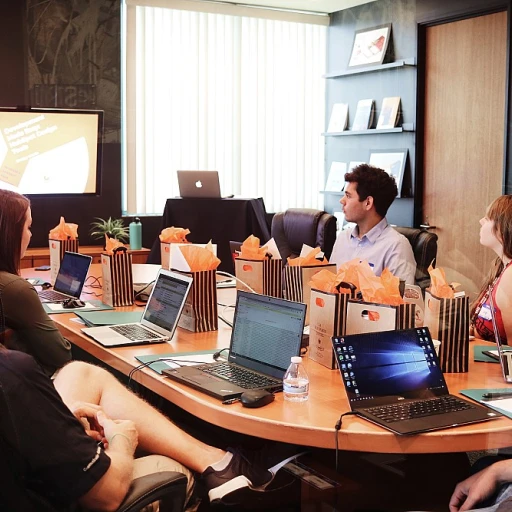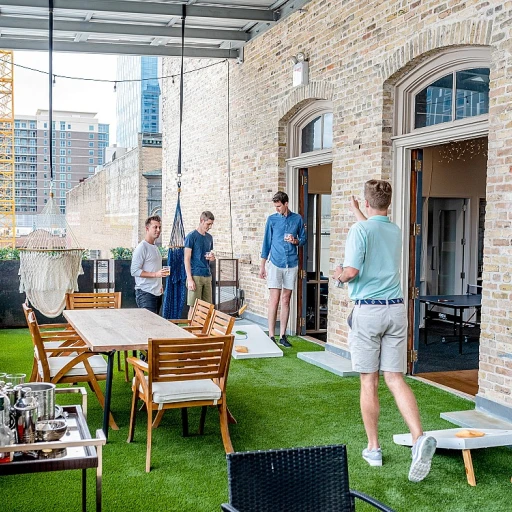
The Art of Building a Therapeutic Office Environment
Creating a Nurturing Office Space
A therapeutic office environment is rapidly becoming a staple in the progressive business landscapes of the Arabian Emirate, particularly within savvy, health-conscious office managers' strategies. With an understanding that a pleasant workspace can significantly contribute to employee satisfaction and productivity, developing specifically tailored office design principles has become paramount.
An office that provides both comfort and stimulus plays a vital role in nurturing the cognitive and emotional well-being of its occupants. From ergonomic furniture that prevents physical strain to color schemes that promote calmness and focus, every element must be thoughtfully considered. Some key factors include natural lighting, which has been linked to improved mood and energy levels, and flexible workstations that encourage mobility and autonomy.
Encapsulating Authentic Arabian Aesthetics
Incorporating local Arabian aesthetics into the office design not only pays homage to the region's rich cultural history but also promotes a sense of pride and ownership among employees. Traditional geometric patterns, for instance, can be seamlessly blended with modern interiors to create a unique workplace identity that stands out in the corporate world while still fostering a relaxing atmosphere.
Strategic Placement of Green Spaces
The inclusion of indoor greenery can transform the ambiance of a workspace. Integrating plants and biophilic design not only aesthetically enhances the office but also purifies the air and improves overall air quality. Offices that incorporate green spaces report higher levels of employee contentment and a significant reduction in stress-related complaints, illustrating the profound impact that a connection to nature can have within an office setting.
Reference to natural elements and strategic green spaces will be evaluated further as part of exploring the impact on mental health and the promotion of work-life harmony later.
Embracing Smart Office Technology
Modern Arabian offices are pioneering the adoption of smart office technology to facilitate a therapeutic work environment. From climate control that ensures comfort to noise-cancellation systems that minimize disruptive background sounds, technology can be employed to create an atmosphere conducive to productivity and mental well-being. Utilization of smart technology also implies efficiency and forward-thinking, qualities highly regarded in the Arabian corporate world.
Digital advances in office communication systems can also reduce unnecessary stress, with platforms that streamline workflow and provide clear channels of communication. The positive implications of these technological integrations for team building and improving quality of life in the office will be further elaborated upon in subsequent discussions.
Cultural Sensitivities and Office Dynamics
Understanding the Multicultural Office Landscape
Embracing cultural sensitivities is essential for any office manager aiming to foster a therapeutic work environment. In the heart of the Arabian Emirate's dynamic corporate sector, a nuanced understanding of diverse cultural backgrounds and traditions plays a pivotal role in harmonizing office dynamics. A culturally sensitive office not only supports inclusivity but also enhances employee engagement and collaboration.
Integrating Traditional Values with Modern Office Practices
A balance between honoring traditional values and implementing modern office practices is key to maintaining a positive atmosphere within Arabian business settings. Office managers should seek to incorporate elements such as flexible prayer times and space for cultural celebrations. Moreover, designing office layouts to include private, quiet areas can respect personal customs while still aligning with contemporary work habits.
Customizing Communication for Cohesive Teams
Effective communication is the cornerstone of any successful team. It becomes even more significant when managing intercultural teams. Essential communication techniques include multilingual signage, language support services, and clear, respectful dialogue that considers varying linguistic nuances. These strategies underline the importance of understanding and implementing individualized communication methods to strengthen team bonds.
Driving Inclusion and Equity in Office Initiatives
Promoting inclusion and equity through thoughtful office initiatives can lead to more collaborative and mentally healthy working environments. Initiatives might include mentorship programs that pair senior employees with newcomers, diversity training workshops, and policies that ensure equal opportunities for career advancement. Such endeavors illustrate the office manager’s commitment to a work culture that values every employee.
Navigating Traditional Hierarchy with Modern Leadership Techniques
In many Arabian Emirate companies, hierarchical structures are deeply rooted. However, modern leadership techniques that encourage employee autonomy can complement these traditional frameworks. Office managers can implement open-door policies, provide platforms for employee feedback, and introduce leadership development programs. Combining hierarchical respect with progressive leadership fosters a work environment that empowers employees while upholding traditional respect protocols.
Using Cultural Festivities to Boost Office Morale
Celebrating cultural festivities within the office can significantly enhance morale and provide opportunities for team bonding. Recognizing national holidays, observing significant cultural events, and inviting employees to share their own traditions, all contribute to a vibrant, inclusive atmosphere that benefits both individual welfare and collective productivity.
Mental Health and Work-Life Harmony in Arabian Offices
Enhancing Mental Wellness in the Modern Arabian Workplace
With the rise of the modern economy, mental health has become a paramount concern for office managers focusing on creating an optimal work environment. The bustling cities of the Arabian Emirate are hubs of professional activity where mental wellness can often be overlooked. Acknowledging the importance of mental health and work-life balance is essential for fostering a productive and happy team. Studies have suggested that employees who maintain a stable work-life balance tend to exhibit higher productivity rates and job satisfaction. Office managers can capitalize on these findings by implementing flexible working arrangements, mindfulness programs, and stress-reduction workshops targeting the specific stressors within the Arabian business context.
Fostering Work-Life Synergy for Enhanced Productivity
The Arabian Emirate business landscape is unique, and so are the challenges faced by its workforce in achieving work-life harmony. Office managers have a critical role in ensuring that employees don't just juggle but actually synchronize work with personal life. By offering extended parental leave, advocating for regular breaks, and promoting telecommuting options, managers can significantly reduce burnout rates. Integrating culturally sensitive family events into the corporate calendar also serves to respect the familial focus prevalent in Arabian culture, thereby reinforcing a therapeutic work environment.
Creative Solutions to Office-Induced Stress
Arabian Emirate offices can sometimes be high-pressure environments with a focus on results. However, creativity in addressing the causes of stress can turn the tide in favor of employee health. Encouraging teams to step away from their desks for 'walking meetings' and incorporating greenspaces within the office layout can drastically improve mental clarity and reduce anxiety. Additionally, bringing in experts for guided relaxation sessions or subscribing to wellness apps can offer employees readily available tools to manage their stress levels effectively.
Quantitative Insights into Employee Well-being
Measuring the impact of mental health initiatives is vital for their sustained success. Office managers should look toward data-driven approaches like employee satisfaction surveys, health-related absenteeism rates, and productivity metrics to gauge the improvements in work-life quality. By implementing such metrics, managers can draw clear correlations between employee well-being and business outcomes. This analytical approach not only helps in fine-tuning the office environment but also illustrates the tangible benefits of investing in mental health to stakeholders.
Case Studies: Mental Health Success Stories
To illustrate the transformative power of prioritizing mental health, it’s insightful to look at successful case studies within the Arabian Emirate’s corporate sphere. Companies that have put a strong emphasis on mental wellness programs often report not just happier employees, but also lower turnover rates and improved public images. Such success stories serve as a motivational tool for businesses that might still be skeptical about the impact of mental health measures on the bottom line.
Innovative Approaches to Office Team Building
Innovative Team Building That Fuels Office Cooperation
In the quest to nurture a therapeutic work environment, team building stands out as a pivotal component. It advances beyond traditional exercises to encompass innovative approaches that encourage cohesion and teamwork in Arabian Emirate companies. It's not just about the occasional team outing; it's about integrating team collaboration into daily routines within the office landscape. Engaging in collaborative projects and cross-department challenges fosters a sense of team spirit and can lead to higher levels of job satisfaction and enhanced mental well-being.
Fostering Creativity Through Collaborative Spaces
One method to promote innovation in team building is the creation of collaborative workspaces. These areas are designed to inspire creativity and allow for spontaneous brainstorming sessions. Incorporating elements such as writable walls, communal tables, and comfortable seating areas encourages employees to step away from their usual work zones and interact with colleagues in a different setting. Studies show that such creative environments can lead to a surge in team productivity and creativity, crucial in driving business success.
Technology's Role in Team Engagement
Technology also plays a significant part in team engagement. Virtual reality (VR) and augmented reality (AR) experiences can be employed for team-building exercises, creating immersive and memorable experiences that strengthen team bonds. Moreover, project management tools and collaborative platforms are indispensable for modern office environments, facilitating communication and ensuring everyone is aligned on project goals. These platforms are not just tools; they are the breeding ground for a culture of transparency and shared responsibility.
Measuring the Impact of Team Building Initiatives
To truly gauge the effectiveness of these innovative team building approaches, offices should implement reliable metrics for evaluation. Performance indicators like employee engagement surveys, turnover rates, and productivity stats are valuable in analyzing the direct impact of team building on the quality of life in the office. Other metrics such as the frequency of cross-departmental collaborations and the number of initiatives put forward by employees themselves can offer insight into the long-term success of these programs.
Employee-Led Initiatives: A New Frontier
Lastly, empowering employees to lead and propose their own team building activities can have a profound effect. Employee-led initiatives often result in higher participation rates and can be more closely aligned with the team's interests and needs. Whether it's a community service project or an internal hackathon, these activities can significantly contribute to fostering a collaborative and supportive office atmosphere.
Metrics for Measuring Quality of Life in the Office
Understanding Key Quality of Life Indicators in the Workplace
As an Office Manager striving to cultivate a harmonious and therapeutic work environment, it's essential to have your finger on the pulse of your employees' wellbeing. Leveraging metrics can give you a quantifiable understanding of the quality of life within your office. Reliable data enables you to make informed decisions and track the effectiveness of your initiatives.
- Employee Satisfaction Scores: Regularly conduct surveys to gauge the satisfaction levels of your team. Questions should be designed to reflect on aspects such as comfort, office aesthetics, and overall happiness at work.
- Retention Rates: A direct reflection of the work environment, high retention rates often indicate a healthy office culture that supports quality of life.
- Productivity Metrics: While quality of life is not solely about productivity, a supportive environment typically results in better work output, which can be measured through key performance indicators (KPIs).
Quantifying Employee Wellness and Engagement
In today's business context, especially within the dynamic Arabian Emirate companies, fostering employee wellness and engagement plays a critical role in office management. Sophisticated tracking tools and employee feedback platforms can help you understand how wellness programs impact your team's morale and engagement. Remember, a healthy team is a productive team, and initiatives like flexible scheduling or mindfulness breaks can substantially improve mental health and work-life balance.
- Wellness Program Participation: Track sign-ups and participation in wellness programs to see their popularity and potential impact on employee health.
- Engagement Levels: Monitor how engaged employees are through pulse surveys and one-on-one feedback sessions. This will highlight areas for improvement in your office dynamics and culture.
- Stress Management: Implement and gauge the effectiveness of stress-relief activities. The reduction in stress levels often equates to a boost in quality of life.
Implementing Innovative Team Building Metrics
Team building is not just about fun and games; it's a strategic component in maintaining a positive office environment. By integrating innovative approaches to team building discussed earlier, you can enhance collaboration and unity within your workplace. Measure the success of your team building strategies through qualitative feedback and observe shifts in team dynamics.
- Team Cohesion Surveys: Analyze how connected individuals feel to their team and the company as a whole after participating in team-building exercises.
- Conflict Resolution Rates: Keep an eye on how often conflicts arise and how quickly they are resolved. A decrease in workplace conflicts often signifies an improved office environment.
Incorporating Feedback for Continuous Improvement
Gathering and incorporating feedback is a never-ending cycle that feeds into the continuous improvement of any office setting. It's important that as an Office Manager, you create open channels for your employees to communicate their needs and experiences. This information will enable you to maintain a therapeutic work environment that is ever-evolving to meet the distinctive needs of your team within the Arabian Emirate business landscape.
- Open Forums and Suggestion Boxes: Create opportunities for employees to offer feedback about the workspace, policies, and culture within the office.
- Follow-Up Action Plans: After gathering feedback, develop and implement action plans to address employee concerns. Track the outcomes to assess the effectiveness of these changes.
- Continuous Employee Development: Offer educational resources and development programs. Their popularity and the professional growth of employees can serve as indirect metrics of your office's quality of life.





-large-teaser.webp)



-large-teaser.webp)


